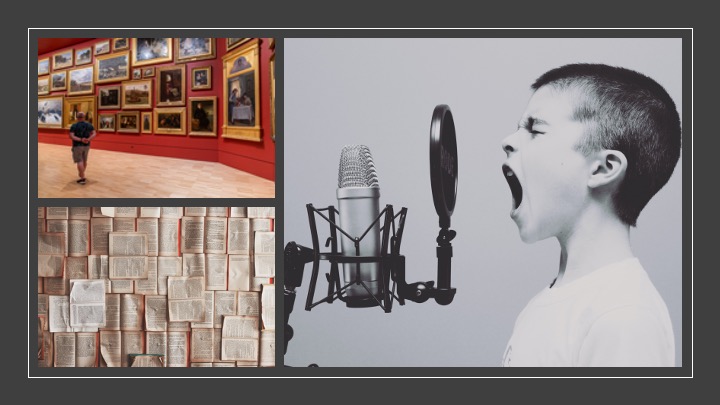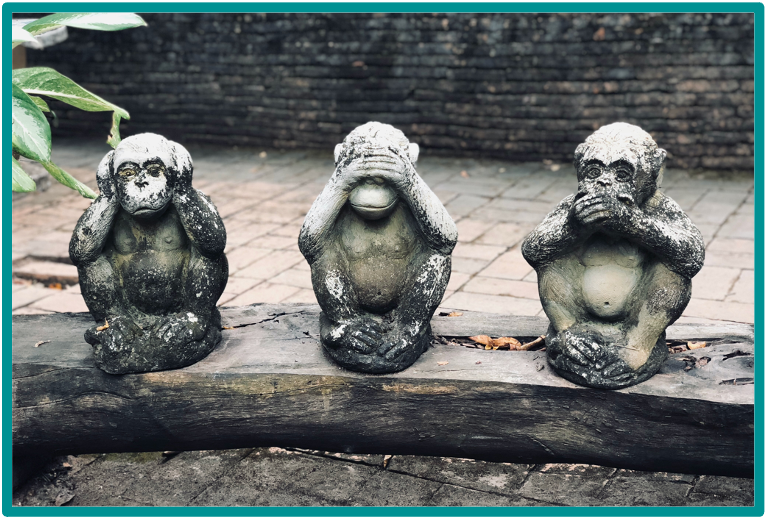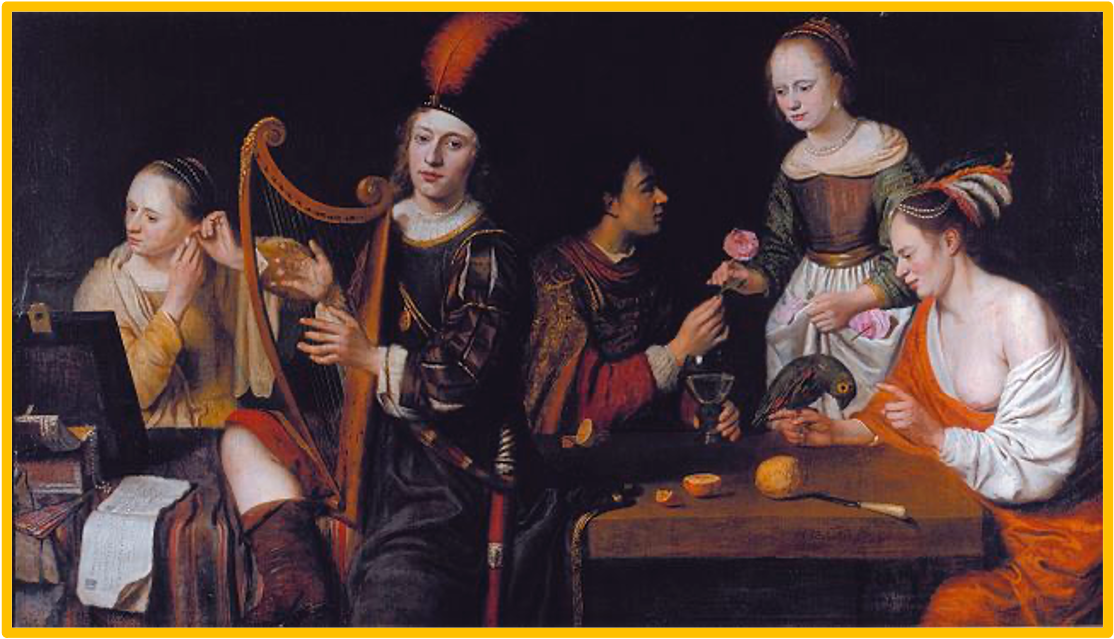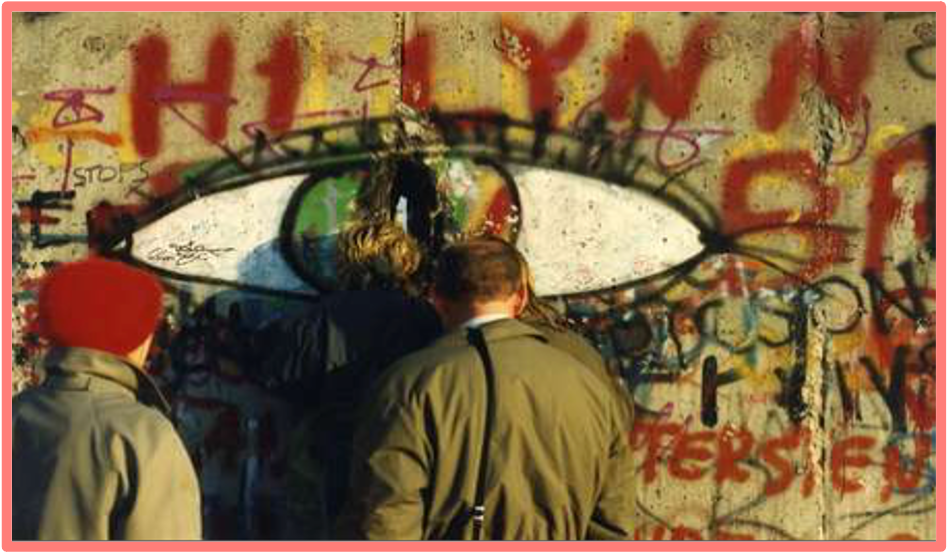Introduction
 |
|
Audio introduction to this composition of images Photo credits: Jason Rosewell, Mitchell Luo, Patrick Tommaso (Unsplashed) |
Multimodal Playground- Playing with Text, Images, and Sound, provides an introduction to the concept of multimodal literacy to students and independent learners. Participants are encouraged to reflect on the transition from textual to multimodal information cultures by engaging in a playful exploration with the learning materials in this course. As such, this course provides a practice-focused learning experience that offers insights into the concept of multimodal literacy by using, and engaging with, multimodal content.
The course is designed in such a way that learners can complete the course without being dependent on an institutional teaching context. As it serves as an introduction to the concept of multimodal literacy, it can serve as a supplement to prepare participants that do not have a background in the Digital Humanities (or related fields) for more challenging courses, such as Introduction to Design Thinking & Maker Culture, and Storytelling for Digital Narratives and Blended Spaces.
Combined with the #dariahTeach course Multimodal Literacies, Multimodal Playground, Playing with Text, Images, and Sound offers practical and theoretical introduction to multimodality in an engaging and playful manner.
This course is divided into three units:
 |
This unit offers an introduction to the concept of multimodal literacy. The first part of this unit offers a playful exploration of multimodality in practice. A series of texts, images, and sounds are presented in such a way that when combined convey a message about multimodality. The exercises in this unit provide a challenge to make sense of these modalities in different ways.
The second part of this unit provides a more theoretical approach to multimodal literacy. This theoretical context helps support the learning journey through the practical explorations in the first part of this unit. A series of exercises will facilitate the learning experience, making it more accesible to learners that do not have access to the readings suggested in this unit.
 |
The key to training in multimodal literacy and being able to handle the rise in information in audiovisual form is to become more conscious of the role of your senses in processing information. This unit revolves around aural and visual literacy. It offers a series of web lectures by specialists, followed by quizzes and assignments. The goal of these exercises is to become more aware of using your senses, challenging you to explore new ways of using seeing and listening.
This unit focuses on the transition from the dominancy of text-based literacy to the proliferation of digital literacy by focusing on two of the five senses- seeing and hearing.
 |
The proliferation in the diversity of modes of representation is connected to the advent of digital technology and the World Wide Web. In this unit, we will take a closer look at The Fall of the Berlin Wall, which occurred in 1989 just a few years before the introduction of the web. As a world event, it received extensive visual coverage. Several examples of narratives about the fall of the Berlin Wall - all of them can be found on the web- will be covered in this unit. Each of the examples has a specific perspective on the event and uses alternatives to mere text-based sources.
Course Developers
Stefania Scagliola is a historian of Italian origin educated in The Netherlands with an expertise in Dutch colonial history and oral history archives. At the Erasmus University in Rotterdam she led two multilingual video-oral history projects with a multidisciplinary research agenda: Croatian Memories and Bosnian Memories. She was able to further enhance her digital and multimodal skills at the Centre for Contemporary and Digital History at the university of Luxembourg by developing the online teaching platform on digital source criticism Ranke.2. Stefania is dedicated to bridging the gap between computer illiterate and digital savvy humanities scholars through the development of a 'digital light' pedagogical strategy. Multimodal Playground was partly developed at the Erasmus Studio, the centre for e-research at the Erasmus University Rotterdam, partly at the C2DH in Luxembourg.
Esther Aminata Kamara is a Dutch-Sierra Leonean writer and researcher and alumnus of the MA Media Studies: Digital Cultures at Maastricht University. Esther likes to explore the bridges and boundaries between West-African and western culture. Her dual nationality allows her to delve deeper into cross-cultural issues, including the impact and development of technology and access to cultural texts, digital tools, and creative skills. She currently works as a reasearch assistant at #dariahTeach.
Acknowledgements
Special thanks for the longstanding support and suggestions goes to Shahed Parnian, coordinator of the Moodle platform at the Faculty of Humanities, Literature and Education of the University of Luxembourg, and to Cecile Duval, who took care of the selection and rights management of many of the illustrations. Student assistants Ioana Turdean, Jordan Ricker, Emmanuelle Decker and Ilaria Comes, who tested the first versions and provided critical feedback, deserve a thank-you as well.
Sarah Cooper and at a later stage Jordan Ricker were in charge of the English proof editing. Vinayak das Gupta (Shiv Nadar University Uttar Pradesh) provided innovative suggestions. Furthermore, Marianne Ping Huang (Aarhus University), Eliza Papaki (Digital Curation Unit, Research Centre ATHENA) and prof. Susan Schreibman (University of Maastricht) helped out by providing extensive feedback at various stages of the development. .
In Stefania's own Dutch professional and personal network she received useful feedback from media scholar Willemien Sanders (University of Utrecht), her daughter Doina Mani, and her friends Leo van Oosten and Alex Schmid.
Thanks to the emergence of new free of copyright online resources, such as Unsplash and Giphy, creating engaging teaching material has become easier, affordable and fun.

